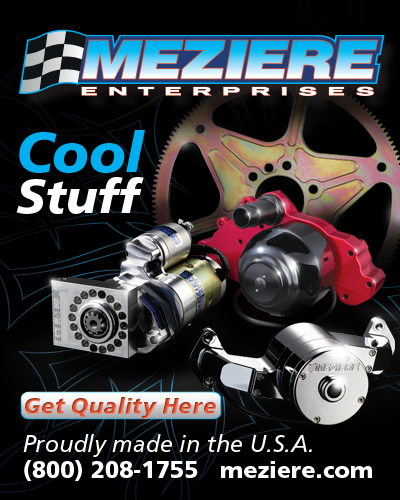ENCORE: SCOTTY CANNON'S RISE TO STARDOM BEGAN WITH HUMBLE BEGINNING
Originally published December 2019
 Scotty Cannon was the benchmark standard for Pro Modified's first decade. In nine seasons of racing in the IHRA's volatile doorslammer division, he won six world championships, finished in the top ten every season, and won 28 of 45 final rounds. A full decade [2008] after the Lyman, South Carolina driver pursued an NHRA fuel Funny Car career, Cannon remained the winningest driver with nine more victories than second-place Shannon Jenkins. He had reached 14 more finals than Jenkins, clearly his fiercest challenger.
Scotty Cannon was the benchmark standard for Pro Modified's first decade. In nine seasons of racing in the IHRA's volatile doorslammer division, he won six world championships, finished in the top ten every season, and won 28 of 45 final rounds. A full decade [2008] after the Lyman, South Carolina driver pursued an NHRA fuel Funny Car career, Cannon remained the winningest driver with nine more victories than second-place Shannon Jenkins. He had reached 14 more finals than Jenkins, clearly his fiercest challenger.
Cannon heard the whispered jeers of how he'd cheated his way to success. His opponents protested him dozens of times, only to lose their money and watch as Cannon was declared in compliance with the rulebook every time.
"I was trying hard," Cannon said. "I was working harder than anybody. Carl Moyer even said that more than once when he did his interviews: 'The reason I won, I was winning so much,' he said.
"He was one of the only guys that really knew why I was winning. I started winning a lot. He's a good businessman. I mean, he had good car dealerships, and he told me, he says, 'I know why you win. Everybody is saying that you're cheating. You're not cheating, you're just working, or you race all the time."
 Moyer had Cannon pegged because, as he understood, a tremendous work ethic can make the difference in any arena.
Moyer had Cannon pegged because, as he understood, a tremendous work ethic can make the difference in any arena.
"I was doing some match racing and racing Quick Eights," Cannon explained. "I raced three or four times a week. It's hard to beat a man that swings a bat three times a week, and you swing it once. And that goes for golf, basketball, anything you do."
Cannon was a survivor, keeping his operation afloat on match race and apparel revenue. He didn't come from a silver spoon background. In fact, the teenage parent/high school dropout developed his blue-collar work ethic organically. The same could be said about his introduction to cars and drag racing.
"My stepmother had a '69 Ford LTD, four-door, 392, but I didn't know what it was from the man in the moon," Cannon admitted. "I could drive to school in the ninth grade. And it had hubcaps on it. We thought just because we took the breather off of it, all my buddies, they'd take breather off it, it'd make the big moaning sounds, it was going faster. But we didn't know; we weren't going nowhere."
From the humble beginning with the "moaning" LTD, Cannon became a sponge when it came to automotive knowledge.
"There was a policeman that came in my Dad's restaurant," Cannon said. "I worked for my daddy in a little hot dog restaurant joint. We didn't come from money, our family. This policeman would come in and ask me, "Well, when are you going to get you a fast car?"
 The policeman had a 1969 Camaro RS, a four-speed beauty with two four-barrel carburetors that Cannon can still picture to this day. Cannon would go to nearby Greer Dragway to watch him run on Thursday nights, one of the few opportunities he was off work.
The policeman had a 1969 Camaro RS, a four-speed beauty with two four-barrel carburetors that Cannon can still picture to this day. Cannon would go to nearby Greer Dragway to watch him run on Thursday nights, one of the few opportunities he was off work.
"I couldn't go Saturdays because I had to work," Cannon said. "I had to work seven days a week. My daddy worked me to death. I mean, that was real slavery. I mean, not getting paid, living with your daddy, and having to work all the time. My wife just got pregnant, trying to go to school, don't know where to quit, didn't know whether to crap or go blind."
Every chance he got to go, Cannon was at the drag strip. The car of his dreams, the Camaro, while potent standing still, was snakebit under power.
"I watched him run it, his car, and it broke an axle," Cannon said. "There was some old guy standing there, and I remember it like it was yesterday, and he said, 'He doesn't run that thing about once a month, and every time he brings it down here, he doesn't know what he's doing."
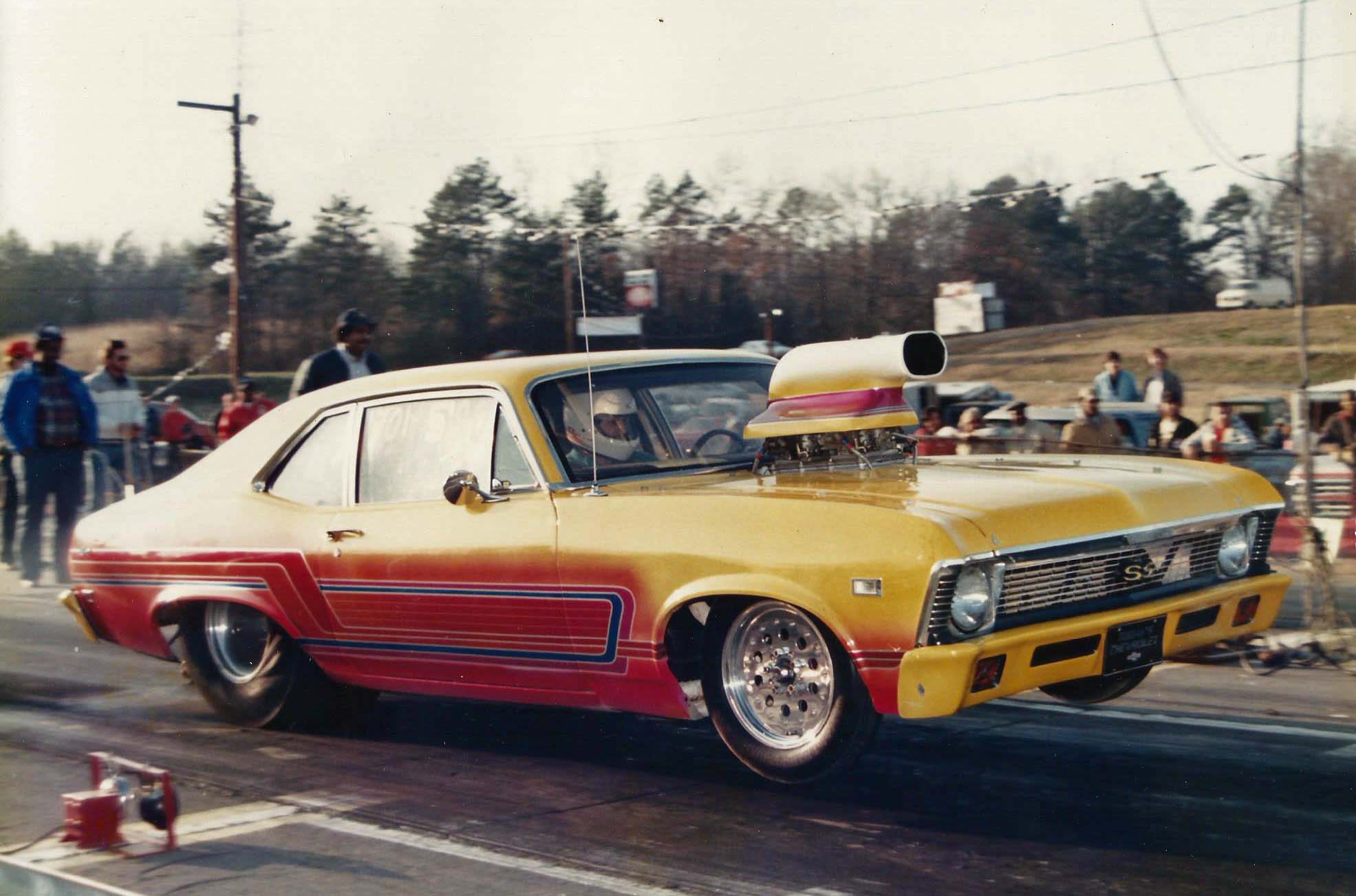
"He breaks the axles in that thing. He ought to put some aftermarket axles in it."
Unknowingly the elder drag race fan exposed Cannon to a world he didn't know existed - the world of aftermarket parts.
"I said, 'Well, where do you get them at?" The inquisitive Cannon asked. "I mean, I didn't know anything. I saved enough money, and my daddy gave me a little, I think it's $500 or $1,000, and my grandpa pitched in some and bought me a Trans-Am."
The policeman, Wayne Forrester, had a service station on the side, and no sooner did Cannon have his Trans-Am, than he brought it to Forrester to install an aftermarket camshaft in it.
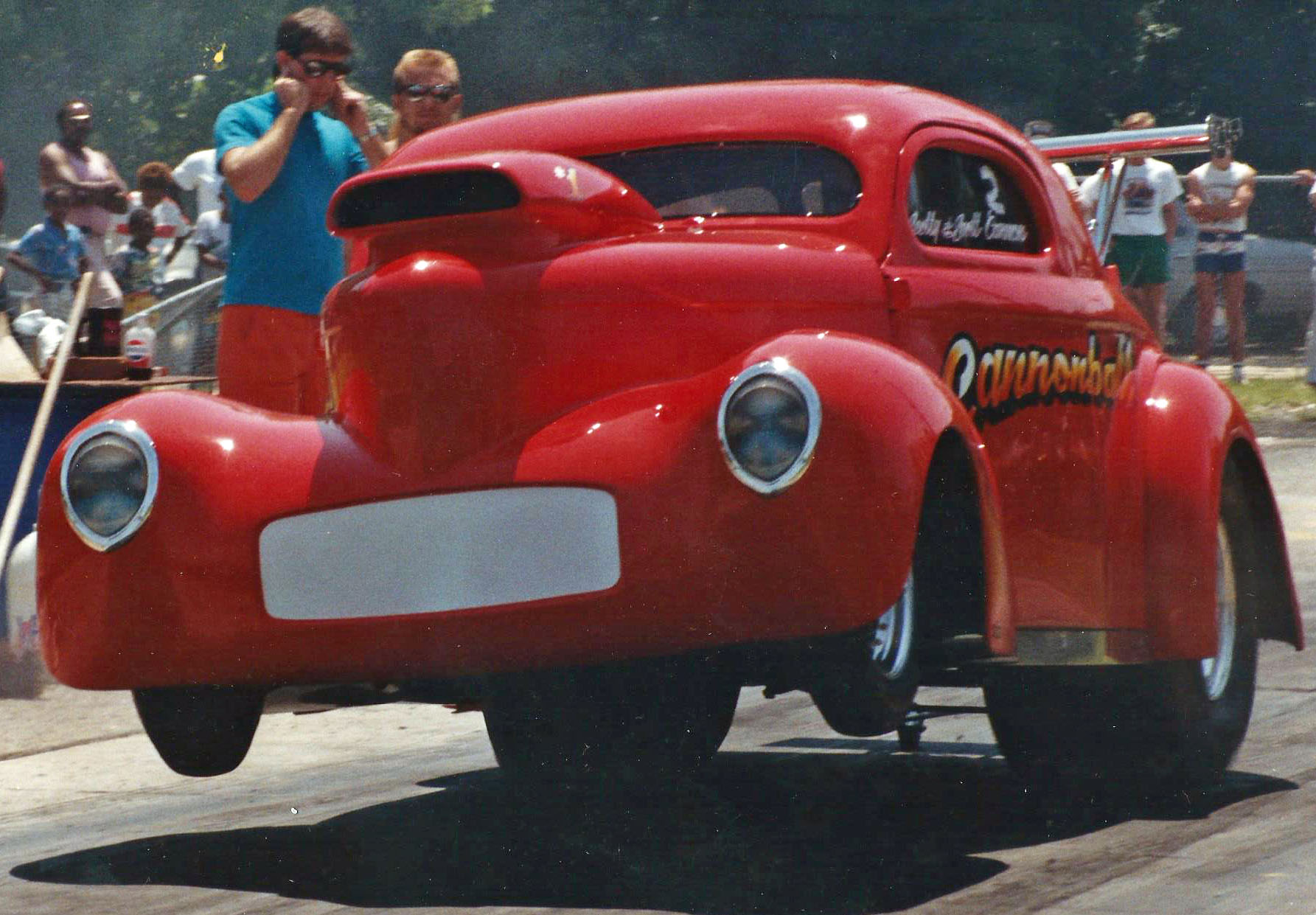 The same friends who convinced Cannon a "moaning" LTD was high performance, were blown away at the notion Cannon's '77 Trans-Am had an aftermarket cam in it.
The same friends who convinced Cannon a "moaning" LTD was high performance, were blown away at the notion Cannon's '77 Trans-Am had an aftermarket cam in it.
Now, this Trans-Am wasn't your average high-performance Firebird. It was the same make, model, and color as the one made famous by Burt Reynolds in the movie Smokey & The Bandit.
"I would guess I saw that movie about 20 times," Cannon said.
Forrester would then encourage Cannon to get a set of older Pontiac cylinder heads.
"I'm lying to my daddy the whole time," Cannon said. "He said, 'That thing doesn't sound the same."
What Cannon didn't know is Forrester was keeping Cannon's dad Virgil abreast of the situation.
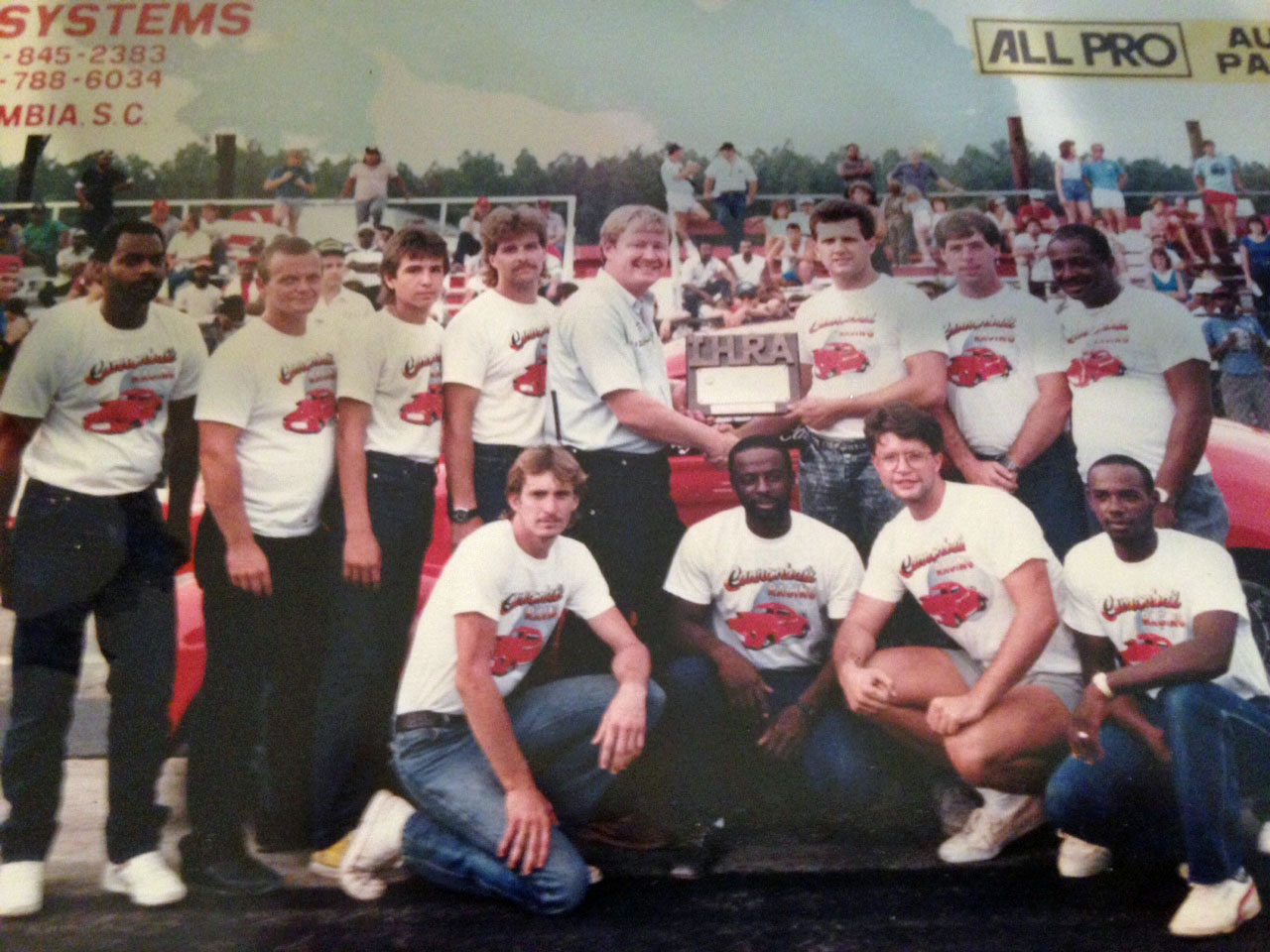 By this time, Cannon had the Pontiac running as quick as 9.10 seconds in the eighth-mile, roughly 14 seconds or so in the quarter-mile. In 1983, this was pretty quick.
By this time, Cannon had the Pontiac running as quick as 9.10 seconds in the eighth-mile, roughly 14 seconds or so in the quarter-mile. In 1983, this was pretty quick.
"All [adding the heads] did is really raise the compression, looking back on it," Cannon said. "And they did flow better than the new stuff. Put a little intake on it. Put a set of headers on it, and you had to put head gaskets on about every other day.
"Thought that was the greatest thing in the world because you had to wear it off. And whether it was broken or not, when I come home from school, I raised the hood on it."
Cannon eventually stepped up to his first full-fledged race car, a Pontiac-powered 1968 Camaro.
"The first time down the track, I slung the rods out of it," Cannon recalled.
Cannon was smitten with drag racing, and every extra dollar he could make extra went into his fledgling racing operation.
Legendary Pro Stock racer Bill Jenkins once said, "A drag racer is someone who spends money he doesn't have, on things he doesn't need, to impress people he doesn't know."
"I end up spending all the money, my wife pregnant, just world's come to an end," explained Cannon, who was 16 years old at the time. "I didn't have anywhere to live. I'm still living in the room I grew up in."
Cannon was living on his own, kinda-sorta, in a mobile home his dad owned.
"I had to go stay in the wintertime with her [ex-wife Pam's] mama, little Scott was born, in the winter because it was so doggone cold and you couldn't stay warm. But I still raced."
Cannon believed he was putting his family first, but in hindsight, he admits he wasn't.
"I was paying all my bills," said Cannon, who recalled at the time he was bringing home $160 weekly.
It didn't take long before work got in the way of a growing racing habit.
"I would say, 'Daddy, let me off work," Cannon recalled. "Well, that didn't go over good at all. He said, 'If you go race, you can just go move out of this trailer.' I was renting it from him; he let me move in, and I rented it. Well, I'm gone."
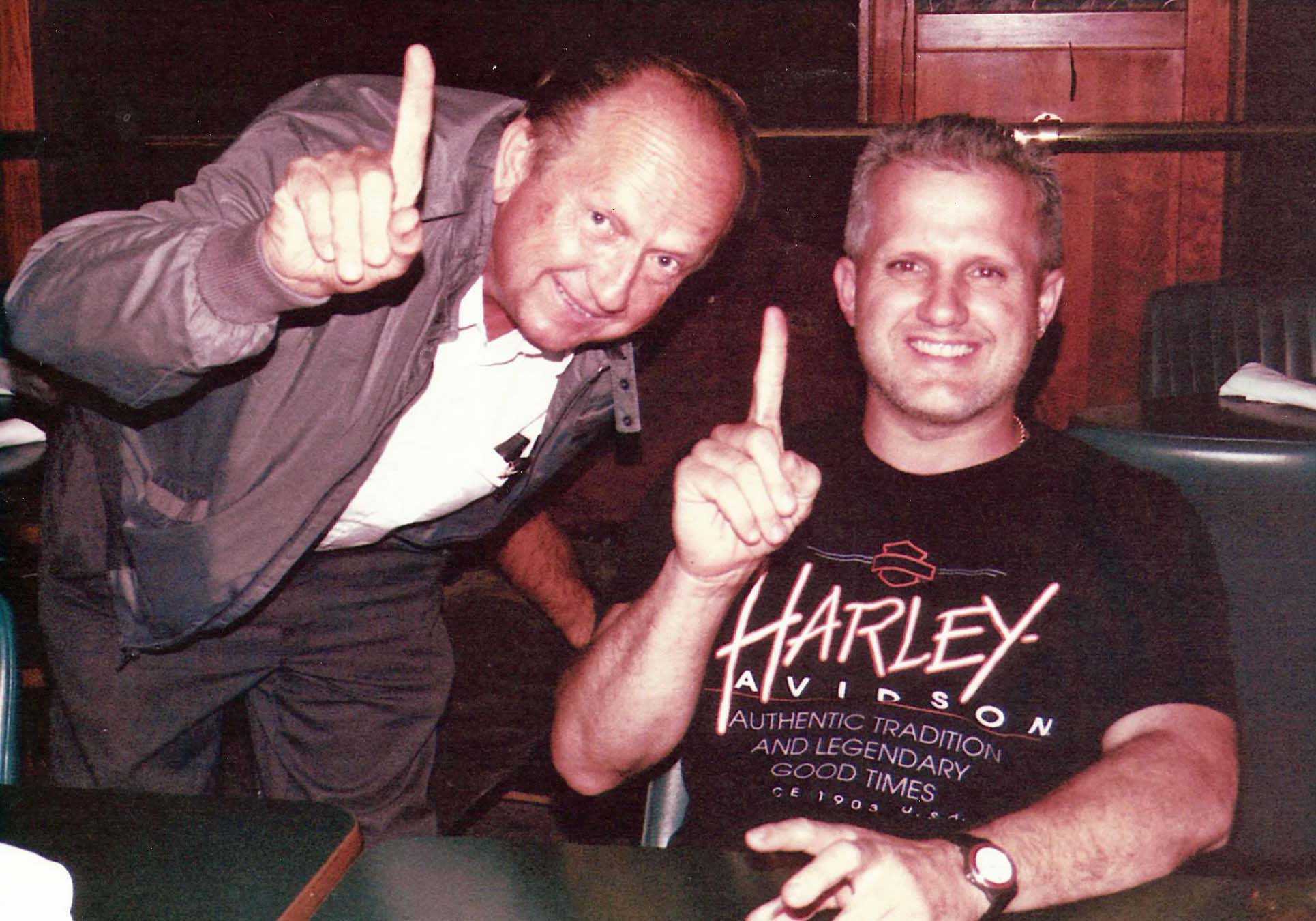
Cannon's act of defiance set in motion a major league battle of wills.
"I got to liking [racing] so much, I got to where I'd take off on Saturday and got another boy to swap out," Cannon said. "I'd work two days for him, and he worked Saturday nights for me punching a register for my daddy. And Daddy said, 'You either quit racing, you quit your racing, or you keep working full time. That racing ain't going to do but break you, put you in the poorhouse."
"He said, 'You ain't going to amount to nothing. You got a kid. You need to build a house."
Cannon quit working for Virgil. Well, depending on who you ask, Virgil fired him.
"Racing wasn't paying enough to make it," Cannon said. "So, I went back to work."
The three Cannon men eventually built the kid a house, one he still lives in today. Little did Cannon know, although Virgil presented obstacles along the way to his racing, he was one of his son's biggest fans.
"I heard him telling one of my friends one day. He never did say it to me, but a few of my buddies got to where they would say, 'Man, your daddy's proud of you," Cannon recalled. "I said, "He ain't never told me."
Eventually, Virgil, who passed away on December 2, 2017, embraced his son's passion for the straight-line racing.
'There came a time when there wasn't anything negative being said," Cannon said. "I was actually working on other people's cars at night out in the cold. Even if it's 30 degrees, I was out there in the cold, putting brakes on their cars."
It wasn't long before Cannon's mechanical expertise was generating more revenue than working at the restaurant.
"You've got to understand, from about '79 to '80, I got from where I didn't know how to put a bearing in a car, to building a car," Cannon explained. "So my hard head was trying to get real smart, real fast."

The IHRA came to Greer in 1983, when Cannon had a car running in the 6.80s.
"I didn't know anything about throttle stops," Cannon said. "There wasn't such thing in my world. They say run 6.80, run dead on your dial in. I staged my car. I was going to run the bracket class. It passed tech. And they said, "You can run Hot Rod if you want to."
"And I said, 'Well, what's hot rod?"
"And they said, 'You run heads-up. You just pull in, pull the bulbs on and go."
"And I thought, "I ain't never done that."
"I didn't even cut a light until about the final. And somebody said, 'If you'll knock that top bulb out, if your car will run a little faster, you can rob about .05 off your ET, and you can have a faster car. That's why them guys got deep on their car."
"I said, I wondered what in the world they were writing on their durn window for. They write DEEP on there. I don't know what that meant. I promise. I know it sounds like I'm playing dumb. I didn't know what in the world it meant. I had no idea."
Cannon convinced an IHRA official to give him one more run to work on his deep staging and reaction time.
"I didn't even know what a reaction timer was, but I was determined to get a good one," Cannon said.
Cannon did, and one of the seasoned Greer Drag racers Butch Vaughn told him, "You do that, and you win the race."
Vaughn was right, Cannon did win.
"That kind of opened the door," Cannon said. "I don't know if it opened the door, or give me that confidence boost, that I could do better. But I had won some bracket races before then. And I undoubtedly did. And I got to where I was, not getting rich, but I was making enough money to where I could double up on a house payment here and there. And doing pretty good."
Shortly after the Greer win, Cannon graduated to his fourth race car -- a Top Fuel winged Willys, which raced Top Sportsman.
Cannon, who once brought in $150 a week, which largely supported his racing habit, could make upwards of $2500 by winning a Quick Eight event.
"He was my biggest fan by then," Cannon said with a smile.
Cannon would sell the Willys at the end of the 1987 season when it appeared to him the new Billy Meyer IHRA regime would factor out the doorslammers. Before he sold it, Cannon managed to get his hot rod featured in Popular Hot Rodding and Super Stock & Drag Illustrated.
Cannon purchased a dragster to race the 7.90 index class.
In 1989, he had Tommy Mauney build him a new Willys, one which would put him on the map, and on a pathway to success.
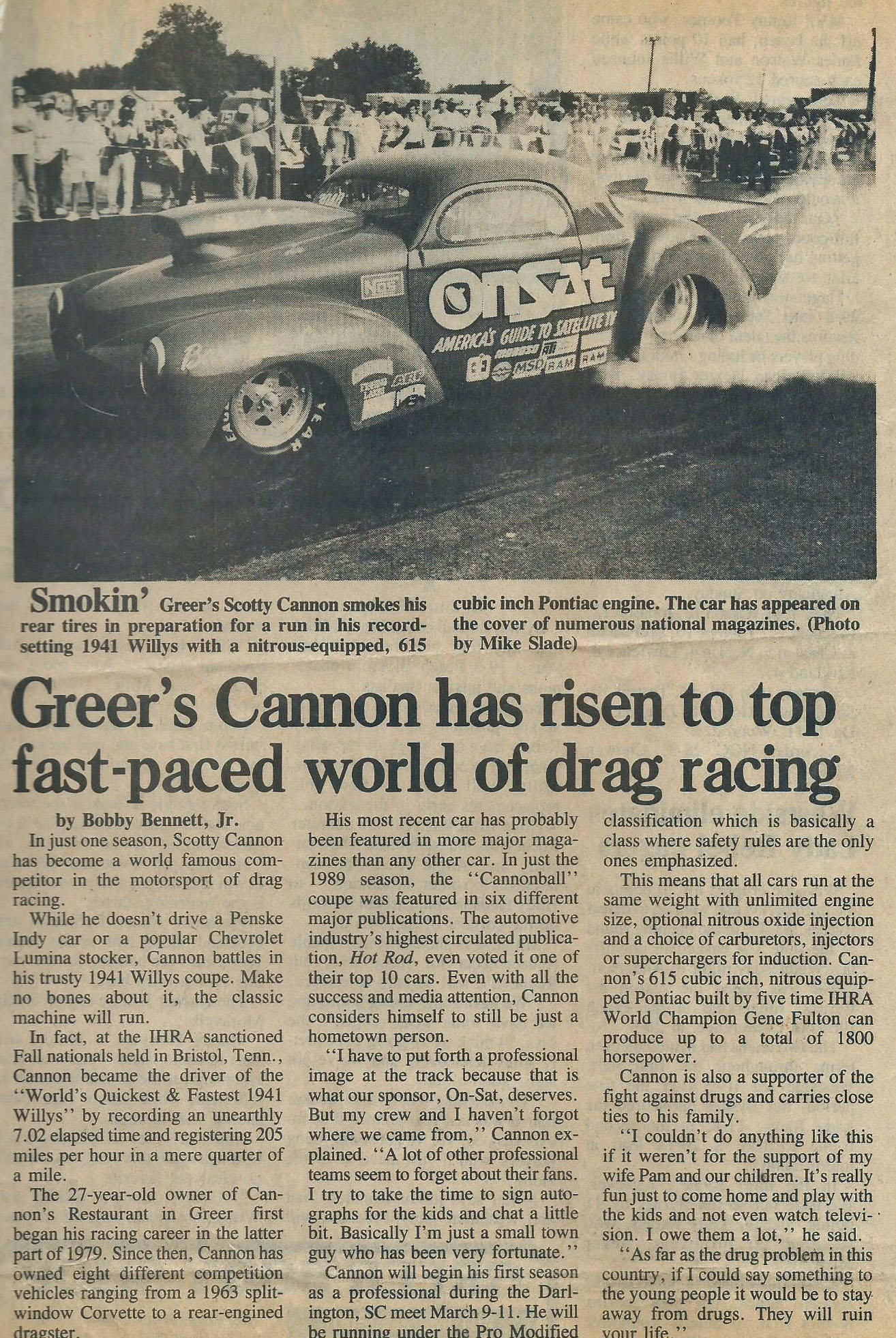 "It took my dad a while; he ain't never said he's wrong," Cannon said. "The bottom line is, if I hadn't stayed up to 4 AM, and my wife hadn't put up with me. And daddy hadn't fired me. And I hadn't been so headstrong, and hardheaded. I'd still probably be punching the register."
"It took my dad a while; he ain't never said he's wrong," Cannon said. "The bottom line is, if I hadn't stayed up to 4 AM, and my wife hadn't put up with me. And daddy hadn't fired me. And I hadn't been so headstrong, and hardheaded. I'd still probably be punching the register."
It was a sweat-filled weekend in St. Louis during the 1989 season when Cannon's ship finally came in. Cannon could eek his way into a Saturday night Quick Eight, but quickly became first round fodder. But on this particular night, Cannon raced smarter, not harder.
"I had, by then, used stuff that had come out; I had the delay box in my car, with a CO2 clutch cylinder," Cannon explained. "It was a straight drive car. And I was more or less trying to win the races.
"I qualified second or third, but the biggest competitor was Rob Vandergriff. He'd been 7.07, or 7.10 maybe, or .11. It was low sevens. I had to run him and I honestly didn't think I could beat him. But my car ran better than I thought it could.
"The problem was, back then, is we ran carbon fiber clutches in our cars. The fast, fast cars. And it's real hard to get reaction time with them. Because the hotter they get, the more they grab. And that's what made them go down the racetrack. Nobody runs them now, they're outdated.
"I still had a regular paddle clutch in my car. I didn't slip the clutch hardly at all. But I was in the race for winning races. So come Quick Eight time, I just turned the delay box off, used the button. I'm .001, .002, .003, straight to the final, and had to run Robbie.
"I treed him and won. Next day, turned the delay box on, won my first big national event. I was the first one to win the first quick eight and national event on Sunday. Top Sportsman and in the Quick Eight."
Cannon went on to become the face of the new Pro Modified class, which grew out of those Saturday Night Quick Eight events.
"I guess when I'm gone from this earth I want to be remembered as one of the guys who had to work hard for what he got," Cannon said. "And it wasn't given to him. If you saw where I came from, then you'll see what made me work hard. I wouldn't cheat. I'd outwork you. It's all I knew how to do."






























